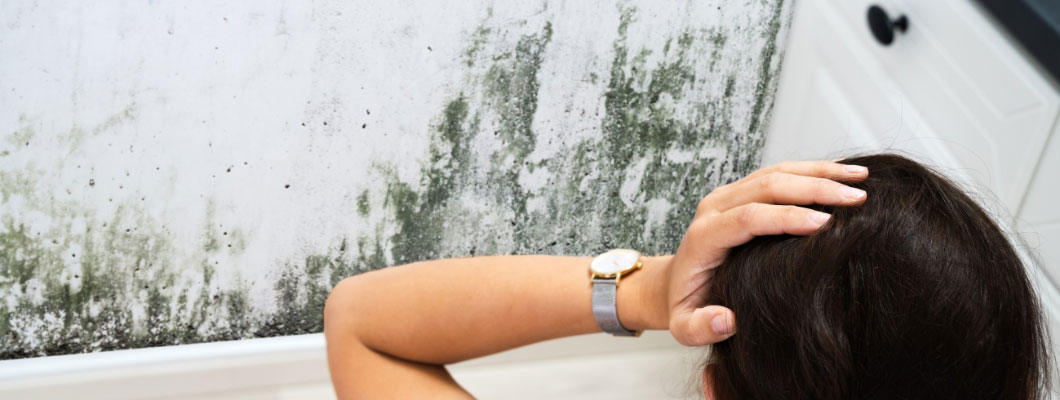
Mould remediation and mould removal are specialised areas that require a thorough understanding of Occupational Health and Hygiene practices. Mould remediation requires trained personnel and specialised plant and equipment to remediate mould contamination effectively.
The mould removal process
To minimise any damage to health and buildings, mould or dampness in your workplace should be removed as soon as they are identified.
Our mould removal service is designed to return your workplace to normal conditions by removing the mould and mould-damaged materials, drying all surfaces, cleaning the area and treating the source to prevent further contamination and health effects of mould exposure.
Our mould removal process involves:
- Containing the contaminated area by relocating staff and isolating unaffected areas of the building
- Removing and disposing of all mould and mouldy materials
- Cleaning and drying salvageable building materials, furnishings and carpets
- Fixing the source of the moisture or contamination
- Treating surfaces to minimise the risk of the mould returning
What is mould?
When mould grows, it produces allergens, irritants and toxins which can cause allergic reactions and respiratory problems. When exposed to mould, building occupants may report odours or experience a variety of health problems, including:
- Headaches
- Breathing difficulties
- Skin irritation
- Allergic reactions
- Aggravation of asthma symptoms
Find out more about mould in our blog post, ‘What is Mould?’
How mould contamination affects your workplace
When mould takes over, it can cause damage to building materials and furnishings. Mould grows best in damp and poorly ventilated areas, both indoors and outdoors. As a site manager, building manager or employer, it’s your responsibility to identify and ensure the safe removal of mould for the health and safety of your employees. This includes addressing workplace respiratory health by identifying and correcting the conditions that allow mould to grow and properly removing mould-damaged materials.
Identify mould and water damage at the source
Mould can grow on just about anything, as long as there is sufficient moisture to help it survive.
If you’ve had any localised flooding or water problems, check for visible mould growth, puddles of water or condensation, or signs of water damage such as discolouration and staining. Mould typically emits a musky odour and will often appear as small black and white specks, dark spots, stains or patches on surfaces.
To identify mould and water damage at the source, start by looking at common sources or causes of water or moisture problems such as:
- Roof leaks
- Condensation associated with high humidity or cold spots in the building
- Localised flooding due to plumbing failures or heavy rains
- Slow leaks in plumbing fixtures
- Malfunction or poor design of humidification systems
- Landscaping or gutters that direct water into or under the building
- Refrigerators and heating/air conditioning systems
Mould contamination assessment checklist
If you’d like to check the extent of mould contamination yourself, you can use this checklist to guide your evaluation
- Protect yourself by wearing personal protective equipment such as goggles, face masks and gloves. You should never touch mould with your bare hands, and you should avoid getting it on your skin, in your eyes or breathing it in.
- Locate the source of the mould problem and identify contaminated materials and furniture.
- Identify the size and extent of water damage and mould growth. try to estimate the total square feet of contaminated building materials.
- Check ventilation systems for damage and switch off contaminated HVAC systems.
- Identify whether the mould problem is recurrent or persistent. Have there been previous mould problems in the building?
- Are there areas where mould has been covered with paint?
- Are other hazardous materials involved (such as asbestos or toxic chemicals)?
Suppose there are mouldy odours and/or unexplained health issues among employees but no obvious visual signs of water or mould damage. In that case, this may indicate more severe contamination beneath the surface.
A professional mould remediation and removal service can treat the contamination safely and effectively.
Determine the extent of your mould contamination
Once you have identified a mould problem, it is important to calculate the extent of the contamination to establish what remedial measures must be taken. Some mould problems may be too complex or potentially dangerous for untrained people to assess themselves.
If you are concerned about undertaking the assessment yourself or are affected by the mould, you should call a professional to help.
A Sydney Cleaning Solution Mould Removal expert will:
- Determine the extent of the mould problem;
- Locate the source of the issue; and
- Develop an action plan for mould remediation and removal.
